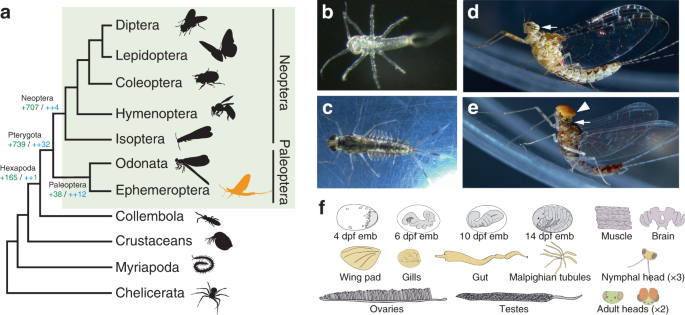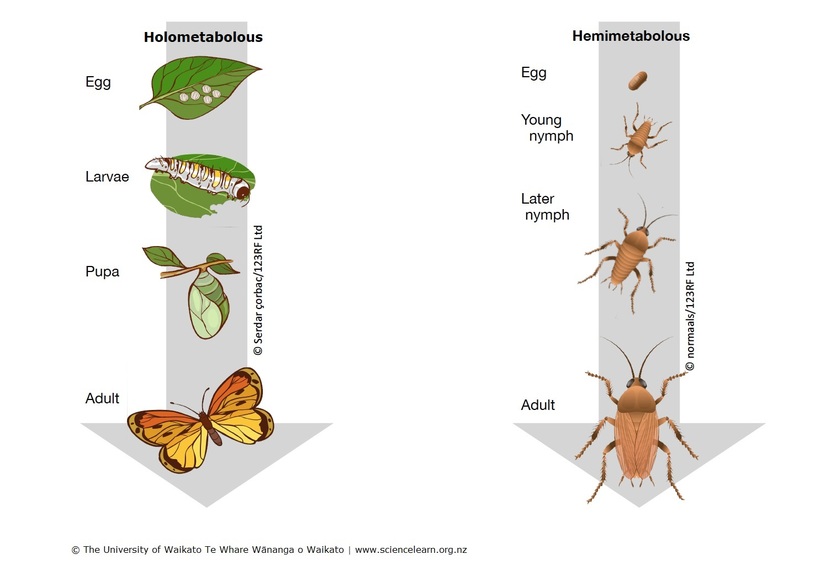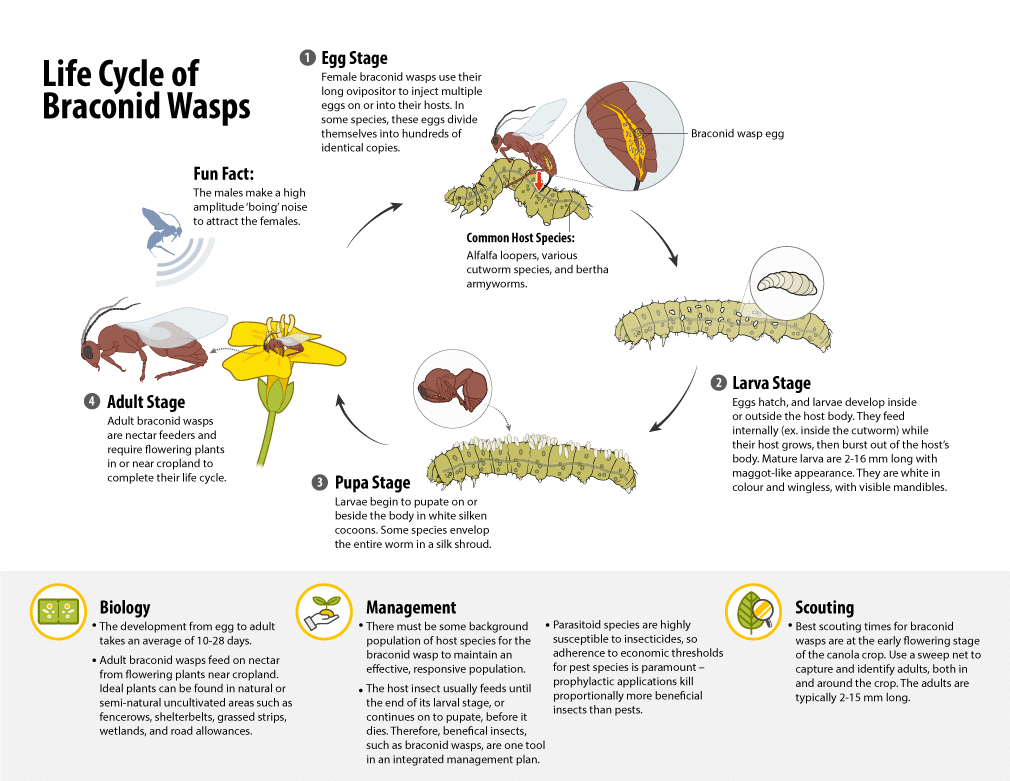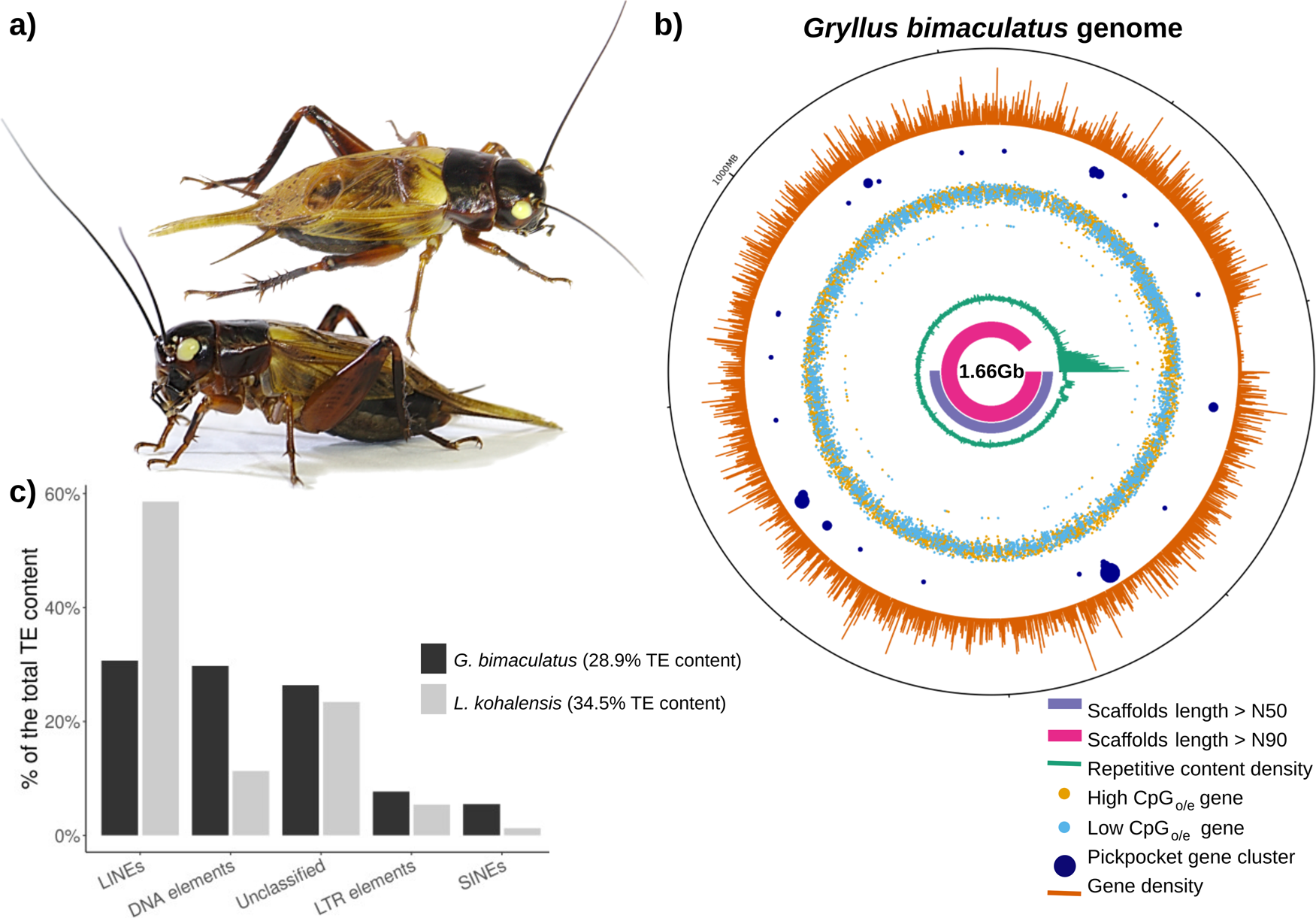Contents
- I. Introduction
- II. Insect Lifecycle Stages
- III. Factors Affecting Insect Development
- IV. Common Insect Species and Their Lifecycles
- V. Insect Lifecycles and Pest Control
- VI. Frequently Asked Questions (FAQs)
- 1. How long do insects live?
- 2. What is the shortest insect lifecycle?
- 3. Do all insects go through metamorphosis?
- 4. How do insects reproduce?
- 5. Can insect lifecycles be influenced by human activities?
- 6. What is the impact of climate change on insect lifecycles?
- 7. How can I identify the lifecycle stage of an insect?
- 8. Are all insects harmful to humans or crops?
- 9. Can insect lifecycles vary based on geographical location?
- 10. How can I prevent insect infestations in my home or garden?
I. Introduction

Welcome to the fascinating world of insects! In this article, we will explore the lifecycle and development of common insect species. From the tiny ants that march in perfect formation to the beautiful butterflies that grace our gardens, insects play a vital role in our ecosystem.
Have you ever wondered how these tiny creatures transform from eggs to adults? Or how they adapt to their surroundings to survive and thrive? Join us as we delve into the intricate details of insect development.
Throughout history, insects have captivated the human imagination. They have inspired artists, scientists, and even writers. Their diversity and adaptability are truly remarkable. By understanding their lifecycle and development, we gain a deeper appreciation for these incredible creatures.
But why should we care about insects? Well, they are crucial for maintaining the balance of nature. Insects pollinate plants, break down organic matter, and serve as a food source for other animals. Without them, our world would be a very different place.
In this article, we will explore the various stages of insect development, from egg to larva to pupa and finally to adult. We will also discuss the factors that influence their growth and survival. So, buckle up and get ready for a journey into the enchanting world of insects!
II. Insect Lifecycle Stages

A. Egg stage
The egg stage is the first stage in the lifecycle of insects. Eggs are usually small and vary in shape and color depending on the species. Some eggs are round, while others are elongated or oval-shaped. The color of the eggs can range from white to yellow, brown, or even black.
The development of eggs is influenced by various factors such as temperature, humidity, and availability of food. Insects that lay their eggs in favorable conditions, such as warm and moist environments, often have shorter egg development periods.
B. Larval stage
After the eggs hatch, the larvae emerge. Larvae are the second stage in the insect lifecycle and are often referred to as caterpillars or grubs, depending on the insect species. Larvae are usually worm-like in appearance and have soft bodies.
There are different types of larvae, each with its own unique characteristics. Some larvae have distinct body segments, while others may have hairs or spines. Larvae also vary in color, ranging from green to brown or even brightly colored.
During the larval stage, insects undergo rapid growth and development. They feed voraciously on plant matter or other organic material, depending on their specific feeding habits. Larvae play a crucial role in the ecosystem as they help break down organic matter and contribute to nutrient recycling.
C. Pupal stage
The pupal stage is a transformative phase in the insect lifecycle. After the larval stage, insects enter the pupal stage, where they undergo metamorphosis. Pupae are often enclosed in a protective casing called a cocoon or chrysalis.
During metamorphosis, the insect undergoes significant changes in its body structure and organs. The larval tissues are broken down, and new adult structures develop. This process involves the reorganization of cells and the formation of wings, legs, and other adult features.
The duration of the pupal stage varies among different insect species. Some insects spend only a few days as pupae, while others may remain in this stage for several weeks or even months.
D. Adult stage
The adult stage is the final stage in the insect lifecycle. Once the metamorphosis process is complete, the insect emerges from the pupal casing as an adult. Adult insects have fully developed wings, legs, and reproductive organs.
The appearance of adult insects varies greatly depending on the species. They can range from small and inconspicuous to large and brightly colored. Adult insects play a vital role in pollination, seed dispersal, and maintaining ecological balance.
Reproduction and mating behavior are significant aspects of the adult stage. Insects have various mating strategies, including courtship rituals and pheromone communication. The lifespan of adult insects can vary greatly, ranging from a few days to several months or even years, depending on the species.
This section provides an overview of the different stages in the lifecycle of insects. From the tiny eggs to the voracious larvae, the transformative pupae, and the fully developed adults, each stage is essential for the survival and continuation of insect species. Understanding the lifecycle of common insect species can help us appreciate the intricate processes and adaptations that enable these fascinating creatures to thrive in diverse environments.
III. Factors Affecting Insect Development

Insect development is influenced by various factors, both environmental and biological. Understanding these factors is crucial for comprehending the lifecycle and growth of common insect species. In this section, we will explore the key environmental factors and the role they play in insect development, as well as the impact of food availability and quality.
A. Environmental Factors
1. Temperature
Temperature is a critical factor that significantly affects insect development. Insects are ectothermic creatures, meaning their body temperature is regulated by the external environment. Different insect species have specific temperature requirements for optimal development. For instance, some insects thrive in warm climates, while others prefer cooler temperatures.
Extreme temperatures can have adverse effects on insect development. High temperatures can accelerate growth and development, leading to shorter lifecycles. Conversely, low temperatures can slow down development or even halt it altogether. This is why certain insect species are more prevalent in specific seasons or geographical regions.
2. Humidity
Humidity levels also play a crucial role in insect development. Insects have varying moisture requirements, and their ability to regulate water loss is essential for survival. High humidity can create a favorable environment for certain insect species, as it helps maintain their water balance and supports growth and reproduction.
On the other hand, low humidity can pose challenges for insect development. Insects may struggle to retain moisture, leading to dehydration and hindered growth. Additionally, low humidity can impact the availability of suitable breeding sites and food sources for certain insect species.
3. Light Exposure
Light exposure is another environmental factor that influences insect development. Many insects have photoperiodic responses, meaning their development is influenced by the duration of light and dark periods. Light exposure can regulate various biological processes in insects, such as diapause, reproduction, and molting.
For instance, certain insect species require specific day lengths to trigger reproductive activities. Insects that rely on seasonal cues may delay or accelerate their development based on the changing daylight hours. Light exposure also affects the behavior and activity patterns of insects, influencing their overall development and lifecycle.
B. Food Availability and Quality
1. Impact on Larval Development
Food availability and quality have a significant impact on the larval development of insects. Larvae, often referred to as caterpillars or maggots, have specific dietary requirements to support their growth and metamorphosis. The availability of suitable food sources directly affects their survival and development.
Some insect species have specialized feeding habits and can only consume specific plant species or organic matter. The absence or scarcity of their preferred food sources can hinder larval development and result in reduced survival rates. Conversely, an abundance of suitable food can promote faster growth and development.
2. Influence on Adult Reproductive Capacity
Food availability and quality also play a crucial role in determining the reproductive capacity of adult insects. Adequate nutrition is essential for the production of viable eggs and the overall reproductive success of insects. Insufficient food resources can lead to reduced fertility, decreased egg production, and poor offspring quality.
Furthermore, the quality of the food source can impact the nutritional value received by adult insects. Nutrient-rich diets can enhance reproductive performance, while poor-quality diets may have detrimental effects. The availability of suitable food sources for adult insects is vital for maintaining healthy populations and ensuring successful reproduction.
IV. Common Insect Species and Their Lifecycles

A. Mosquitoes
Mosquitoes are one of the most common and well-known insect species. Their lifecycles consist of four stages: egg, larva, pupa, and adult. Female mosquitoes lay their eggs in stagnant water, such as ponds, puddles, or even containers with water. These eggs hatch into larvae, commonly known as wigglers, which live in the water and feed on organic matter and microorganisms.
After a few days, the larvae enter the pupal stage, during which they do not feed but undergo a transformation. The pupae are comma-shaped and float on the water’s surface. Finally, adult mosquitoes emerge from the pupae, ready to mate and continue the lifecycle.
Mosquitoes have a significant impact on human health as they are vectors for various diseases, including malaria, dengue fever, and Zika virus. Female mosquitoes feed on blood, which they require for egg development. During this feeding process, they can transmit diseases from infected individuals to healthy ones.
B. Butterflies
Butterflies undergo a fascinating lifecycle known as complete metamorphosis. It consists of four distinct stages: egg, larva (caterpillar), pupa (chrysalis), and adult. Female butterflies lay their eggs on specific host plants, which serve as food sources for the emerging larvae.
Once the eggs hatch, caterpillars emerge and begin to feed voraciously on the host plant’s leaves. They grow rapidly and shed their skin several times during this stage. After reaching a certain size, caterpillars enter the pupal stage. They attach themselves to a surface, such as a leaf or twig, and form a chrysalis.
Inside the chrysalis, the caterpillar undergoes a complete transformation, breaking down its body tissues and reorganizing them into the adult butterfly. After a period of time, the adult butterfly emerges from the chrysalis, with fully formed wings. Butterflies are known for their vibrant colors and delicate flight. Some species undertake long-distance migrations, traveling thousands of miles to reach their breeding or overwintering grounds.
C. Ants
Ants are highly social insects that live in colonies. Their lifecycles include three main stages: egg, larva, and adult. The queen ant lays eggs, which are tended to by worker ants. The eggs hatch into larvae, which are legless and grub-like in appearance. Larvae are fed and cared for by worker ants until they pupate.
During the pupal stage, the ant undergoes metamorphosis, similar to butterflies. Inside the pupa, the body undergoes significant changes, and the adult ant develops. Once fully developed, the adult ant emerges from the pupa and joins the colony’s workforce.
Ants have a complex social structure, with different roles assigned to different individuals. The queen’s primary role is reproduction, while worker ants perform tasks such as foraging, nest maintenance, and caring for the young. Some ant species build elaborate nests underground, while others construct nests in trees or other structures.
D. Bees
Bees are essential pollinators and play a crucial role in the ecosystem. Their lifecycles consist of four stages: egg, larva, pupa, and adult. The queen bee lays eggs in the hive, which are then cared for by worker bees. The eggs hatch into larvae, which are fed a mixture of pollen and nectar by worker bees.
After a few days, the larvae spin a cocoon and enter the pupal stage. Inside the cocoon, the bee undergoes metamorphosis, similar to butterflies and ants. Finally, the fully developed adult bee emerges from the cocoon.
Bees are known for their role in pollination, where they transfer pollen from the male part of a flower to the female part, enabling fertilization and the production of seeds. Different types of bees have specific roles within the hive, such as queen bees for reproduction, worker bees for foraging and hive maintenance, and drones for mating.
The pollination process carried out by bees is vital for the reproduction of many plant species, including agricultural crops. Without bees, the ecosystem and food production would be significantly impacted.
V. Insect Lifecycles and Pest Control

Insects play a significant role in our ecosystem, but they can also become pests when they invade our homes, gardens, or crops. Understanding their lifecycles and implementing effective pest control measures is crucial for maintaining a pest-free environment. In this section, we will explore the importance of pest lifecycles, strategies for managing insect lifecycles, and the role of natural predators in biological control.
A. Understanding pest lifecycles
1. Importance for effective pest control
Understanding the lifecycles of pests is essential for effective pest control. By knowing the different stages of an insect’s life, such as egg, larva, pupa, and adult, we can target specific lifecycle stages to disrupt their growth and reproduction. For example, targeting the eggs or larvae can prevent the pests from reaching maturity and causing further damage.
2. Targeting specific lifecycle stages
Each insect species has a unique lifecycle, and targeting specific stages can be more effective in controlling their populations. For instance, some pests are more vulnerable in their larval stage, while others are easier to control as adults. By identifying the vulnerable stages and implementing control measures accordingly, we can minimize the impact of pests on our homes and gardens.
B. Integrated Pest Management (IPM)
1. Definition and principles of IPM
Integrated Pest Management (IPM) is an approach that combines various pest control strategies to minimize the use of pesticides and promote environmentally friendly practices. The principles of IPM include monitoring and identifying pests, setting action thresholds, implementing preventive measures, using biological control methods, and employing chemical control as a last resort.
2. Strategies for managing insect lifecycles
IPM utilizes a range of strategies to manage insect lifecycles effectively. These strategies include cultural practices, such as crop rotation and proper sanitation, which disrupt the lifecycle of pests. Mechanical control methods, like trapping or physical barriers, can also be employed to prevent pests from reaching their target areas. Additionally, the use of insecticides targeted at specific lifecycle stages can provide effective control while minimizing environmental impact.
C. Natural predators and biological control
1. Introduction to natural enemies of insects
Natural predators are organisms that feed on pests and help control their populations naturally. These predators can include birds, spiders, ladybugs, and parasitic wasps, among others. By encouraging the presence of natural enemies in our gardens or implementing biological control methods, we can reduce the reliance on chemical pesticides and promote a more balanced ecosystem.
2. Encouraging beneficial insects for pest control
To encourage beneficial insects for pest control, we can create habitats that provide them with food, shelter, and water. Planting diverse flowering plants can attract pollinators and predatory insects. Additionally, avoiding the use of broad-spectrum insecticides that harm beneficial insects is crucial for maintaining a healthy population of natural predators.
By understanding the lifecycles of pests, implementing integrated pest management strategies, and encouraging natural predators, we can effectively control insect populations and reduce the reliance on chemical pesticides. This approach not only protects our homes, gardens, and crops but also promotes a more sustainable and environmentally friendly approach to pest control.
VI. Frequently Asked Questions (FAQs)
1. How long do insects live?
Insect lifespans can vary greatly depending on the species. Some insects, like mayflies, have extremely short lifespans of just a few hours or days. On the other hand, certain species of ants and termites can live for several years. The average lifespan of most insects falls somewhere in between, typically ranging from a few weeks to a few months.
2. What is the shortest insect lifecycle?
The shortest insect lifecycle is found in species of insects known as mayflies. These insects undergo a process called incomplete metamorphosis, where they hatch from eggs into nymphs that resemble miniature adults. The nymphs then molt several times before reaching adulthood. The entire lifecycle of a mayfly can be as short as a few hours or up to a few days, depending on the species.
3. Do all insects go through metamorphosis?
No, not all insects go through metamorphosis. In fact, there are two main types of insect development: complete metamorphosis and incomplete metamorphosis. Insects that undergo complete metamorphosis, such as butterflies and beetles, go through distinct stages of egg, larva, pupa, and adult. In contrast, insects that undergo incomplete metamorphosis, such as grasshoppers and cockroaches, have nymphs that resemble miniature adults and molt several times before reaching adulthood.
4. How do insects reproduce?
Insects reproduce through sexual reproduction. Most insects have separate male and female individuals, and mating occurs when a male transfers sperm to a female. The female then lays eggs, which hatch into offspring. Some insects, like bees and ants, have complex social structures where only the queen reproduces, while others, like butterflies, engage in courtship behaviors to attract mates.
5. Can insect lifecycles be influenced by human activities?
Yes, human activities can have a significant impact on insect lifecycles. Habitat destruction, pollution, pesticide use, and climate change are just a few examples of human-induced factors that can disrupt insect populations and their lifecycles. For instance, the use of pesticides can kill off beneficial insects, while habitat destruction can eliminate crucial breeding grounds. It is important for us to be mindful of our actions and strive to protect and preserve insect habitats.
6. What is the impact of climate change on insect lifecycles?
Climate change can have profound effects on insect lifecycles. Rising temperatures, changes in precipitation patterns, and altered seasonal cycles can disrupt the timing and synchronization of insect life stages. For example, warmer temperatures can cause insects to emerge earlier in the year, which may lead to mismatches with their food sources or disrupt pollination cycles. These disruptions can have cascading effects on ecosystems and the overall biodiversity of an area.
7. How can I identify the lifecycle stage of an insect?
Identifying the lifecycle stage of an insect can be challenging, but there are some key characteristics to look for. In general, insects in the egg stage are small, oval-shaped, and often attached to a substrate. Larvae or nymphs are typically smaller versions of the adult insect, but they may have distinct features or behaviors. Pupae are usually immobile and enclosed in a protective case or cocoon. Finally, adult insects have fully developed wings and reproductive organs. Field guides, online resources, and entomologists can provide further assistance in identifying specific insect lifecycles.
8. Are all insects harmful to humans or crops?
No, not all insects are harmful to humans or crops. In fact, the majority of insects play important roles in ecosystems as pollinators, decomposers, and natural pest controllers. However, there are some insect species that can cause damage to crops, transmit diseases, or bite and sting humans. It is essential to differentiate between harmful and beneficial insects and employ sustainable pest management strategies that minimize harm to both humans and the environment.
9. Can insect lifecycles vary based on geographical location?
Yes, insect lifecycles can vary based on geographical location. Factors such as climate, available resources, and predator-prey dynamics can influence the timing and duration of different lifecycle stages. For example, insects in temperate regions may have distinct seasonal patterns, while those in tropical regions may have more continuous breeding cycles. Additionally, certain insect species may be specific to particular habitats or regions, further contributing to variations in lifecycles.
10. How can I prevent insect infestations in my home or garden?
Preventing insect infestations in your home or garden requires a combination of proactive measures. Here are some tips:
- Keep your home clean and free of food debris, as insects are attracted to food sources.
- Seal any cracks or openings in your home’s exterior to prevent insects from entering.
- Remove standing water and fix any leaks to eliminate breeding sites for mosquitoes and other water-dependent insects.
- Trim vegetation away from your home to reduce hiding places for insects.
- Use natural pest control methods, such as companion planting, biological controls, and insect-repellent plants.
- Regularly inspect your garden for signs of pest damage and take appropriate action, such as handpicking pests or using organic insecticides sparingly.
By implementing these preventive measures, you can minimize the risk of insect infestations and maintain a healthy home and garden environment.
